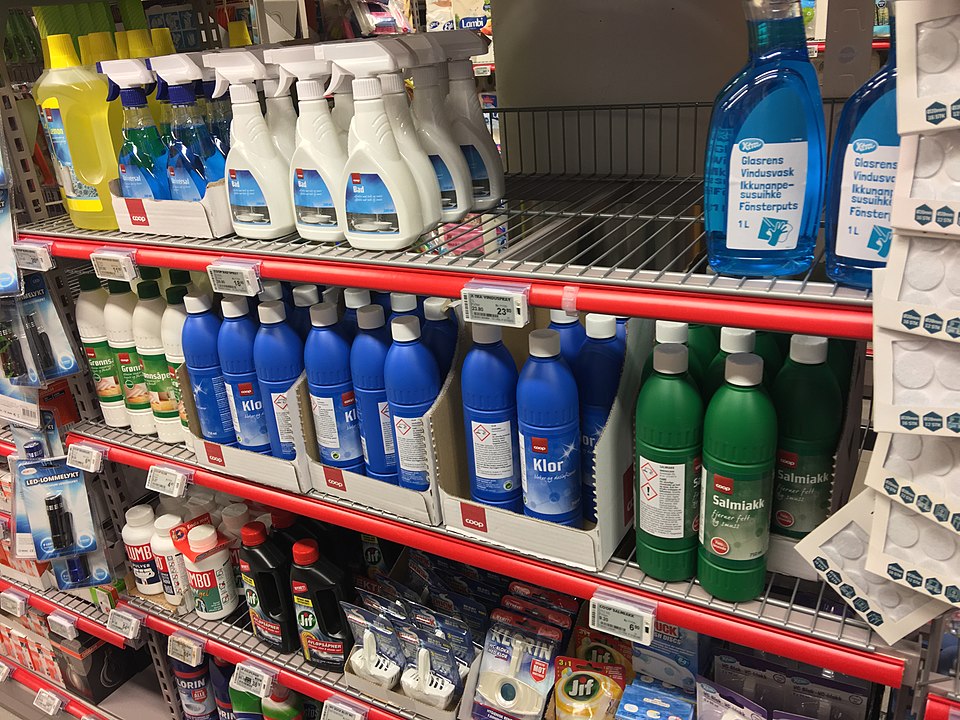Editor’s Note: There are a lot of questions when it comes to water, soil, and the air we breathe in New Orleans, so ViaNolaVie teamed up with the Chemical Engineering Service Learning Class at Tulane University, taught by Dr. Julie Albert, in order to get some of these questions answered. The series is called “Dear Big Chem-EZ” (think “Dear Abbey” but with less about “Why does my partner ignore me?” and more about “Can I actually drink my tap water?” and “What’s that smell outside my house?”). The series will be published the second Wednesday of every month. If you have questions you’d like answered, send them to kelley@nolavie.com. For our next entry, we thought we’d take a look at what’s happening inside our houses (since we’re spending so much time in them). Here’s a look at the products under your sink.
Dear Big Chem-EZ,
Growing up, I saw that my parents had all of these different cleaning products under their sink, and now as an adult I use the same products yet I still don’t know why or how they work! What’s actually under my sink?

Various cleaning agents in store aisle
Photo: Wikimedia
In 2018, total sales of household cleaning products exceeded $1 billion. These products are constantly advertised on television, in magazines, on social media and are one of the most essential industries to the average consumer. But what exactly are these products made of and are they dangerous?
Chemical engineers design processes to produce these chemicals in large scale manufacturing operations and bring them to you, the consumer. This article will explore 3 common household chemicals and bring you a chemical engineer’s perspective on what exactly you’re spending your hard-earned money on!
Windex® is a common surface cleaner that has two main ingredients, 2-hexocxyethanol and isopropanolamine. These two chemicals work as surface active reagents or “surfactants.” Water alone cannot always remove dirt from a surface because the dirt and water do not mix well. A surfactant reduces the physical forces that prevent mixing, allowing the dirt to easily mix with water and be washed away with a simple wipe of a paper towel. Ammonium hydroxide is also a primary ingredient in Windex®. It controls the pH of the Windex®, making it basic so that it is good at removing the grease that causes fingerprints on glass.
Liquid bleach is known as a chlorine-releasing bleaching agent. Its main component is sodium hypochlorite (NaClO). When bleach interacts with a cloth, like a shirt, it releases an oxygen molecule that breaks up the chemical bonds in chromophores. Chromophores are regions in molecules that absorb light in such a way that it reflects (doesn’t absorb) a specific wavelength of light associated with a specific color. In other words, they are what help to give your favorite blue shirt its color! When bleach breaks these bonds, the material reflects all light, resulting in a white color. Like Windex®, bleach is also basic, so it reacts with acids like vinegar or soda. Bleach can become particularly dangerous if it reacts with an acid because it may release highly toxic chlorine gas into the air. This is part of the reason why Windex® has largely replaced vinegar as a glass cleaner. Other acidic substances that may exist in the house and should be kept away from bleach are fruits and battery acid inside most household batteries.
Drano is commonly used to unclog toilet and sink piping. Its main active ingredient is sodium hydroxide (NaOH) also known as lye. NaOH is a very basic solution and when placed into pipes, it will break down the keratin in your hair, which is usually what clogs pipes. Historically, this is why lye was used to straighten African American men’s hair and give the iconic “conk” style. Prolonged exposure to it however, can result in extreme chemical burns, so Drano should never be left out in the open. Like bleach, Drano contains chlorine agents and should also be kept away from acidic solutions.
-Big Chem-EZ
 NOLAbeings
Multimedia artist Claire Bangser created NOLAbeings as a portrait-based story project that marries...
NOLAbeings
Multimedia artist Claire Bangser created NOLAbeings as a portrait-based story project that marries...
 Data corner: Adobe Suite (create a PDF, social media graphic, presentation, edit a photo and video
Data corner is where you go to work with analytics and top tech skills. It takes on everything from PERL and SQL to Canva and Sprout Social.
Data corner: Adobe Suite (create a PDF, social media graphic, presentation, edit a photo and video
Data corner is where you go to work with analytics and top tech skills. It takes on everything from PERL and SQL to Canva and Sprout Social.
